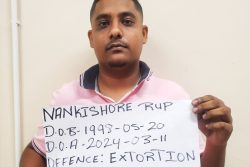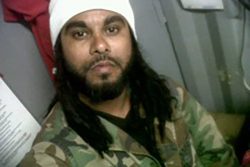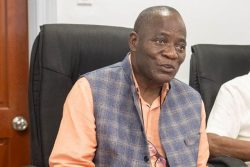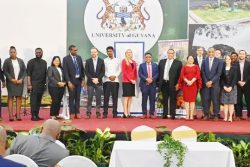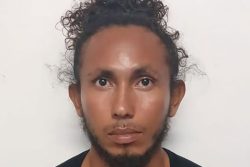It wasn’t going to be the worst of teams but it also wasn’t likely to be the best of teams. So it is not entirely surprisingly that some players were determined not to commit to playing with the current West Indies side as and when the West Indies Cricket Board dictated. We are, after all, firmly in the era of the mercenary cricketer. Therefore, it is not entirely surprising either that the reluctant signatories would be the ones whose services have been so much in demand in previous seasons that they quite reasonably feel they can maximize their earnings by keeping their options open.
Thus, offered A-grade one-year central retainer contracts worth US$80,000 by the WICB, West Indies captain Christopher Gayle and his deputy Dwayne Bravo (along with high-flying all-rounder Keiron Pollard) politely passed, Bravo immediately, Gayle only after he had used the extra time he had requested – and been granted – to consider his options. That was four months ago, the deadline date for responding to the Board’s offer being September 10.
And then came last month and the deadline for the Indian Premier League franchises to name the players they planned to retain for the fourth edition of the world’s premier T20 competition in 2011.
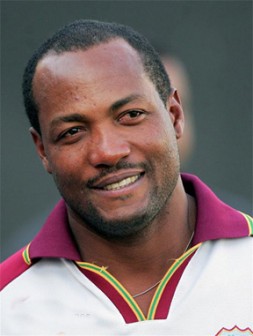
The Mumbai Indians’ list of the four players they proposed to retain named Sachin Tendulkar, who emerged with the highest aggregate in the 2010 edition, offspinner Harbhajan Singh, Sri Lankan quickie Lasith Malinga and Pollard. Bravo’s name was not on the list. Gayle’s did not figure on any list either since his Kolkata Knight Riders opted not to retain any of the four players the rules allow them to keep on their books.
The West Indian pair were not the only big names that were conspicuous by their absence from the lists. India’s Sourav Ganguly, Yuvraj Singh and Gautham Gambhir did not make the cut either as was the case with New Zealand’s Brendon McCullum and Australia’s Andrew Symonds. However, none of these five had as far as is known declined their board’s offer of a retainer contract in the expectation of lining up in the IPL. Not that what has happened means that Gayle and Bravo will be out of the 2011 season; what happens now is that they, along with the other unsigned pros named above and a host of others, including Brian Lara, join the auction pool. Lara, it is known, is in an elite group of 21 who have had the highest reserve price of US$400,000 put on their heads. The other West Indians have to hope that when the hammer falls next week some team will have put a high enough value on the package that they bring to have been willing to put up the substantial sums they presumably expected to fetch when they said no to the WICB.
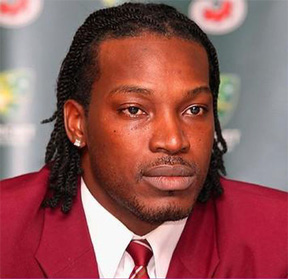
When he joined them in 2008, Gayle’s US$800,000 price-tag made him one of Kolkata’s most expensive players but he was unable to play a single game because of a groin injury. He managed to complete only seven games the following season before he had to join the West Indies team for a three-Test series in England. That was when he famously told reporters that he would not “be so sad” if for some reason Test cricket were to disappear off the face of the earth. The hard-hitting left-hander was signed to play for Western Australia in last season’s Big Bash but completed only two games before he was forced to truncate his season because of an injured side muscle.
If current form is any guide as to how players will fare in the forthcoming auctions, then there will be only two West Indians in the fray this year. Darren Sammy’s side began its Sri Lanka tour very impressively, Gayle slamming a memorable triple century in the First Test in Galle and putting the hosts in danger of going 0-1 down. The weather made it difficult for the visitors to force a result and allowed very little play after that in Colombo and Pallekelle but the West Indies batsmen almost all struggled. Gayle posted scores of 30, 3 and 0 after his opening 333 and Bravo claimed three wickets for 116 runs in three innings and made only 5 and 0 in his two turns at the crease. With Adrian Barath not retained by the Deccan Chargers, Ramnaresh Sarwan overlooked by the selectors and the usually reliable Shivnarine Chanderpaul unable to make any impression in the rain-ruined series in Sri Lanka, only Pollard and Lara, it seems, will be flying the West Indian flag in the IPL this season.
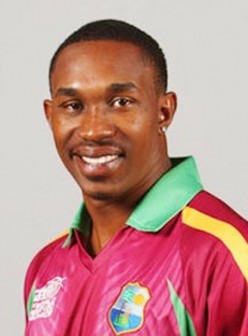
But Bravo’s chances still look good. It is not known just how much the Mumbai Indians paid for him when they signed him but he had a very successful first season and certainly enhanced his growing reputation as a top all-rounder. The 28-year-old was less impressive in the two subsequent seasons but his contributions did help to get Mumbai to last year’s tournament finals. Bravo, who has played 40 Tests and 107 ODIs for the West Indies since his international debut in 2004, also played the shortest form of the game for Victoria in the Big Bash in Australia as well as in England, having picked up a short contract to play for Essex in the final of the Friends Provident T20 last season.
In the immediate aftermath of their refusal to sign the retainer contracts, there was speculation that both Gayle and Bravo might have difficulty convincing the WICB to grant them permission to play in this season’s Big Bash. WICB Chief Executive Ernest Hilaire told reporters that participation in the competition required Board clearance and there was nothing automatic about the grant of such clearance. He said the Board had been liberal with issuing the requisite no-objection certificates (NOCs) but that policy might have to be reviewed to safeguard the interests of West Indies cricket.
“We gave an NOC to a player to play in the Big Bash,” he recalled, “(and) he got injured and could not play for our One-day International team. We have also allowed players to arrive days before important matches and play for West Indies.
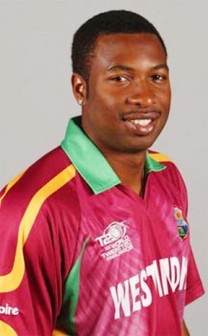
“We have allowed it to happen and the time has come, not for us to say we are not supporting any player playing elsewhere, but to find the right arrangement and framework in which our interest is not compromised.” The 2011 edition of the Big Bash started on December 30 and runs to February 5 while the Caribbean T20 tournament is scheduled to begin next week. Despite that clash and despite Hilaire’s huffing and puffing, however, Gayle, Bravo and Pollard have already been cleared to participate in the Aussie competition. It remains to be seen whether the uncontracted pair will now find employment in the IPL. It remains to be seen as well whether the economic fate of Gayle and Bravo will have any chastening effect on their younger peers like Barath and Bravo the Younger who, one hopes, are at least secretly disturbed by the lack of real commitment to country – despite protestations to the contrary – that their actions bespeak.
What also is of interest is how the imminent return of the Prince of Port of Spain will affect cricket in the region. Lara’s is an influential presence and his influence has not always been for the good. Let us remember that over a decade ago Professor Hilary Beckles, that most insightful commentator on West Indian cricket, identified Courtney Walsh as the last of the dying breed of “nationalist” players for whom country came before self and suggested that, in Lara, we had the prototype of the new breed of post-nationalist player, the “mercenary”. Lara’s first act on being elevated – prematurely, be it noted – to the captaincy in 1998/99 was to engineer a players’ strike over “pay” issues on the way to the star-crossed tour of South Africa.
Last month, the world record holder who retired before Twenty20 cricket became commonplace announced that, at 41 and after more than three years out of the competitive arena, he is interested in playing in the IPL.
He had led the Mumbai Champs in the unofficial Indian Cricket League in the 2007/08 season before it collapsed under the weight of the officially sanctioned IPL. He now considers that it was a mistake to be involved with the ICL although at the time he signed it was, he insists on reminding us, “not a rebel league.”
“I put my name in ink, which was obviously a mistake at the end of it. But I have no regrets. That’s gone. I played one season and I asked them to excuse me because, obviously after having such a long career, you don’t want to be playing ICL cricket and be considered a rebel and banned from all levels of cricket.”

Last season, there was talk of the gifted left-hander representing Surrey in the English domestic Twenty20 tournament but talks between the player and the club fell through at an early stage for reasons that have not been made public.
Lara did, however, appear in an MCC team that took on the Pakistani tourists in a Twenty20 at Lord’s in June. He made a solid rather than spectacular 37 before he was bowled by Umar Gul. Later on in November, he had another brief stint with the Southern Rocks of Zimbabwe whom he represented in a mere three matches in the Stanbic Bank Twenty20 competition. Finally later that same month, it was announced that the former West Indies captain had signed a contract to work with the Zimbabwe national team as a batting consultant during next year’s World Cup in Asia and the home series against Bangladesh in May when the Zimbabweans make a return to the Test arena.
So one can be forgiven for asking out loud the obvious question about what would drive the man whom the Rocks’ media release described as “simply the best batsman to grace the game of cricket” to renew his involvement with the game. There is no easy answer.
In his eponymous biography of Muhammad Ali, Thomas Hauser goes to great lengths to show why the three greatest boxers of all time, Joe Louis, Sugar Ray Robinson and Ali, all made the mistake of coming back for at least one fight too many. And we have seen it in our lifetime in boxing with Sugar Ray Leonard and Michael Jordan in basketball. “Money,” says Hauser of Ali’s decision to come back to fight Larry Holmes, “was a factor since a comeback could be expected to pay between five and ten million dollars.” But he adds that “The spotlight as an end in itself was also a consideration.”
“Ali was a junkie. He needed to see his name in lights, he had to hear the crowd. (…) That’s addictive; everything always revolving around you, everyone telling you you’re the greatest. Ali never messed with drugs, but he was a junkie.”
So would those four lines still have the ring of truth if we substituted ‘Lara’ for ‘Ali’ in lines One and Three? Is the three-times West Indies captain driven by the need to boost his not inconsiderable fortune or is it his ego that is in need of the boost? Is it that he both needs the money and misses the thrill that raising his bat and simultæneously doffing his helmet brings while the plaudits of the large crowd ring in his ear? Or is there realistically a third possibility?
Lara told ESPNcricinfo early last month that, if he does play, he expects his role in the IPL to be “similar to that of Shane Warne or Stephen Fleming, whose jobs with their franchises are described as being that of captain-coaches or ‘mentors’.”
“I see myself in that light as well. I don’t want to be fighting with the youngsters for a game … left out today, playing tomorrow. I would like to see myself as someone who can make a contribution even if I am not in the final XI. I would like to get involved in a holistic way and not just as a player.”
But is this big brother role to be restricted to the IPL?
Lara goes on to talk about West Indies cricket and has this to say: “There is still an abundance of talent. I believe that we still have some of the best youngsters in the world. You look at young Kemar Roach as a fast bowler, you look at Adrian Barath making a hundred in his debut Test at the Gabba, Darren Bravo, Dwayne Bravo’s brother … these are very, very good players.
“What I am worried about is those three or four years from teenage life to early 20s. What happens? Do they grab hold of international cricket? They can’t do that by themselves. There’s got to be a supporting team behind them to make sure that they elevate themselves very quickly to that level.”
Elaborating, he explained that whereas in Australia ordinary players come on the scene and “in three or four years, they are top-class players, (…) in the West Indies, really special young players get out there and struggle [and] can’t find their way. Something must be wrong with our system.”
Lara has no doubt that 26-year-old Darren Sammy is doomed to fail in his efforts to turn things around unless he gets the support of “all the senior members in his side.”
“A leader is as good as his troops.
Young Sammy will need all the support, especially from the older players, the guys who have been captains at some point in time.”
Let those in Antigua and elsewhere who have ears to hear not fail to heed the message. The Prince is back and willing to make his contribution and to lead the charge to the restoration of the glory days. On the field and off it.
And if we are lucky, players of the calibre of Chris Gayle and Dwayne Bravo will still be around to make a cricketing contribution and not simply be seeking to find the quickest way to make a fortune.
(Reprinted from December 2010 Trinidad and Tobago Review)




